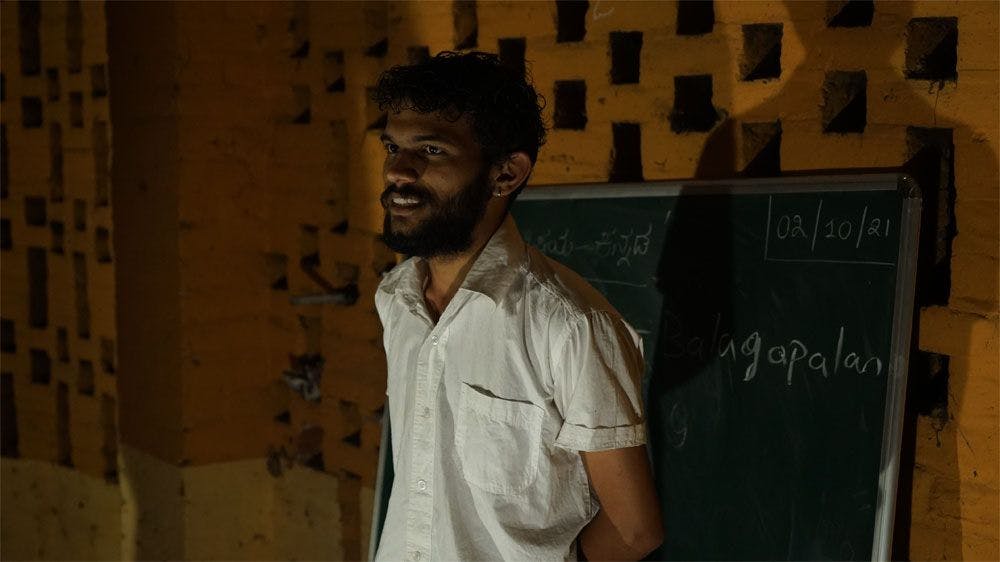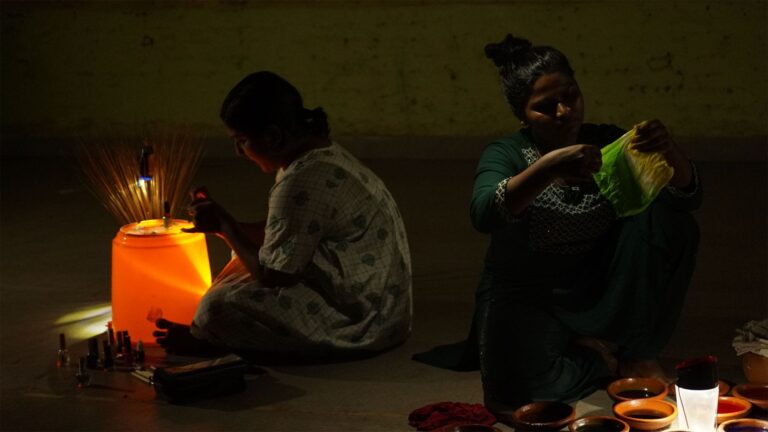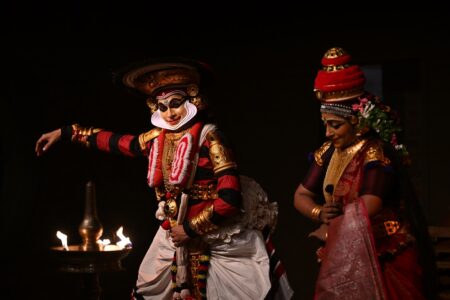Conceptualised by a group of young artists, the theatre production ‘Marks’ was themed around ecology, development and the Covid-19 pandemic.
It was a journey. A journey into the unknown. A journey without destinations. A journey through sensorial experiences. A journey through smells, sounds, textures and sights barely visible. There was nothing that would assault the senses. No loud voices. No sharp lights.
‘Marks’ was the collective theatre production created by the BTA, MTA and M.Phil students of the Calicut University School of Drama & Fine Arts, Thrissur at their Aranattukara campus. It was an offline performance, to be specific, a welcome experience after the long months of our online lives.
Conceptualised by Abheesh Sasidharan, a young theatre practitioner who is also an alumnus of the School of Drama, ‘Marks’ was created by 24 performers with the support of four collaborators.
Designed as a devised promenade performance, ‘Marks,’ took small groups of audience, not more than 20 at a time, through the campus of the School of Drama centred around the Studio Theatre designed by the renowned architect Laurie Baker.

It had no story. No plot. No linear narration. The performance was made up of 26 units which could begin from anywhere. Like the building blocks used by children, the units could be arranged and re-arranged each time. Sasidharan points out that the performance incorporates the possibilities of the architecture of the theatre space designed by Laurie Baker.
Conceptualising and designing a performance during the pandemic time was no mean task for Sasidharan. The work had started in April 2021 with an initial week-long workshop which was followed by the long lockdown due to the second wave of Covid pandemic beginning in May. “The three keywords that evolved from the workshop were ecology, development and pandemic,” points out Sasidharan.
During the lockdown, they managed to take the research process forward. The actual production process started in September. The performance movements, sounds, silence, objects, space, interactive technologies, body paintings, costumes and texts were evolved by the participating students, from their association towards the keywords, points out Sasidharan.
Fusing with the space
“Baker’s idea of sustainability contributes a new spatiality and aesthetics to the performance,” he said. Sustainability and minimalism had been keywords to Sasidharan’s performance practice as well. The production of waste materials after each performance had been a troubling concern for him for some time. Hence, he focuses on paring down the use of properties and prefers to source them from the immediate surroundings.

One thing is certain. This performance does engage with the architecture. Somehow or other, the beautiful outlines of the structure designed by Baker begin to talk to you. I’d watched many performances in these corridors and rooms that constitute the Studio Theatre. But somehow or other, it was for the first time that I started to take note of the lines and contours, the texture of the walls, the light falling through the jali-s.
The use of light had something to do with this experience. Or rather, the absence of the powerful stage lights which often steal the show. Often, the light hides the whole building except the sharp circle of the performance area. You don’t see anything beyond that. But here, the solar and dynamo lamps used in the performance barely outlined the performers who were just visible. However, the surrounding structures were visible, swathed in soft hues of mellow light.
Communicating to the senses
It was not a performance that told a story, rather a sensorial experience. Something that spoke to the senses. Especially when the audience were made to sit blindfolded, listening to the sounds of birds and the flapping of wings all around them, with drops of water falling over their faces. One almost expected the winged creatures to land on your shoulders! The experience of letting yourself be blindfolded and trusting the experience coming to you seemed quite strange, given that we live in an era when we have lost the power to trust the other, the stranger.
The team of performers and makers include S R Aswathy Raj, Jishnu Kili, Sravan Selvan, K O Adarsh, E Ashok, M G Sharath Karanth, M Mallika, Amal Babu, Krishnaprasad, P Muhammed Shibili, Alfi Thankachan, V U Vipin Kumar, Sreesalim Manushya, Jeeva Janardanan, S Archa, Nishmika Das, Ansil Manaf, Saras Meraki, J B Sreeparvathy, LED Sreejith, Vaishak Krishnaprasad, K Bineesh, Abhijith Prakash and Kurian Issac. The collaborators include Lami (Soundscape), Fawas Ameer (Movements), Pooja Mohanraj (Voice and Speech) and Balagopalan (Landscape).




